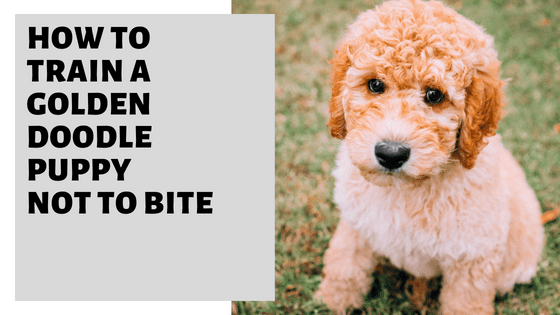Are you tired of your cute little Goldendoodle puppy gnawing on everything in sight, including your hands and feet? Well, fret not! In this step-by-step guide, you will learn effective techniques to train your adorable bundle of fur to stop biting. From understanding the reasons behind their biting behavior to implementing positive reinforcement techniques, this article will provide you with all the tools you need to ensure a bite-free and happy relationship with your Goldendoodle puppy. So, let's dive in and help your furry friend become a well-behaved and gentle companion.
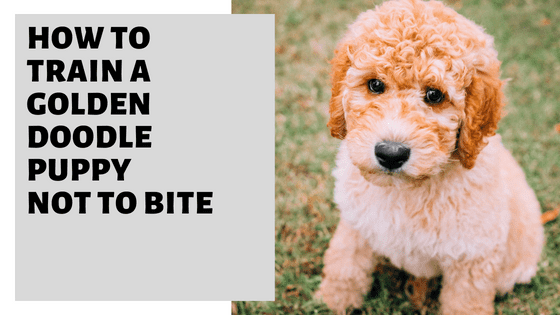
This image is property of peteducate.com.
Understanding the Problem
Recognizing the Natural Instinct
When it comes to biting behavior, it's important to understand that puppies, including Goldendoodles, have a natural instinct to explore the world with their mouths. It's a normal part of their development and it shouldn't be perceived as aggressive behavior. However, it's crucial to redirect this behavior in a positive and appropriate manner.
Understanding Communication
Biting is often a form of communication for puppies. They use their mouths to express various emotions, such as excitement, fear, frustration, or even pain. By understanding the different cues and body language of your Goldendoodle, you can better interpret their intentions and address any underlying issues that may be contributing to their biting tendencies.
Identifying the Different Types of Biting
Not all bites are created equal. It's essential to identify the different types of biting in order to address them appropriately. Some common types of biting include:
-
Mouthing: This is when your Goldendoodle gently bites without causing any harm. It's often a result of teething or play behavior.
-
Nipping: Nipping involves slightly harder bites that may cause minor discomfort. It's usually a form of communication or an attempt to initiate play.
-
Pain-induced biting: If your Goldendoodle is experiencing pain or discomfort, they may resort to biting as a way to express their discomfort. Identifying the source of pain and addressing it is important in managing this type of biting.
-
Aggressive biting: Aggressive biting is characterized by forceful and hard bites, often accompanied by growling or snarling. This type of biting requires immediate attention and professional guidance to ensure the safety of both the dog and those around them.
Setting the Right Environment for Training
Creating a Safe Space
Creating a safe space for your Goldendoodle is crucial in managing biting behavior. Start by providing a designated area where your puppy can retreat to when they need some alone time. This can be a cozy crate or a quiet corner with their bed and toys. By having a safe space, your Goldendoodle will feel secure and less likely to resort to biting as a way to cope with stress or anxiety.
Minimizing Potential Triggers
Identifying and minimizing potential triggers can help reduce biting incidents. These triggers can include loud noises, sudden movements, or overstimulation. By removing or minimizing these triggers, you can create a calmer environment that promotes positive behavior.
Establishing Consistent Rules
Consistency is key when it comes to training your Goldendoodle not to bite. Establish clear and consistent rules from the beginning. Communicate these rules to everyone in your household to ensure that there is no confusion or mixed signals. Consistency will help your Goldendoodle understand what behaviors are acceptable and what are not.
Teaching Bite Inhibition
The Importance of Bite Inhibition
Bite inhibition is an essential skill for any dog to learn. It involves teaching your Goldendoodle to control the force of their bite, so they can interact appropriately with humans and other animals. This skill is crucial in preventing serious injuries if accidental bites were to occur. Teaching bite inhibition early on can significantly reduce the risk of future biting incidents.
Using Soft Mouth Approach
One effective way to teach bite inhibition is through the "soft mouth" approach. This involves teaching your Goldendoodle to gently mouth your hand or other objects without exerting undue pressure. When your puppy bites too hard, make a high-pitched yelping sound to mimic the reaction of a littermate. This will startle them and teach them that biting too hard is undesirable. Reward them with praise and treats when they exhibit softer bites.
Utilizing Distraction Techniques
Distraction techniques can be helpful in redirecting your Goldendoodle's biting behavior. By providing them with appropriate chew toys or interactive puzzles, you can redirect their focus onto these items instead of biting. Whenever you catch your puppy biting something they shouldn't, immediately replace it with a more appropriate chew toy. This will associate the act of biting with the toys, reinforcing the desired behavior.
Socializing Your Goldendoodle
Introducing to Different People
Socializing your Goldendoodle with a variety of people is crucial in preventing biting behavior in unfamiliar situations. Gradually introduce your puppy to different individuals, ensuring that these interactions are positive and rewarding. Encourage gentle petting and exposure to different touches to teach your Goldendoodle how to appropriately interact with humans.
Exposing to Different Dogs
In addition to socializing your Goldendoodle with people, it's important to expose them to other dogs as well. Organized puppy playdates or doggy daycare can provide controlled environments for your Goldendoodle to interact with other dogs. This will help them learn proper doggy etiquette, including bite inhibition, during play sessions.
Expanding Experiences
Expose your Goldendoodle to a wide range of experiences to help them become well-rounded and less prone to biting. Take them on outings to various places, such as parks or pet-friendly stores. Exposing them to different sights, sounds, and smells will help them become more adaptable and less likely to resort to biting out of fear or insecurity.
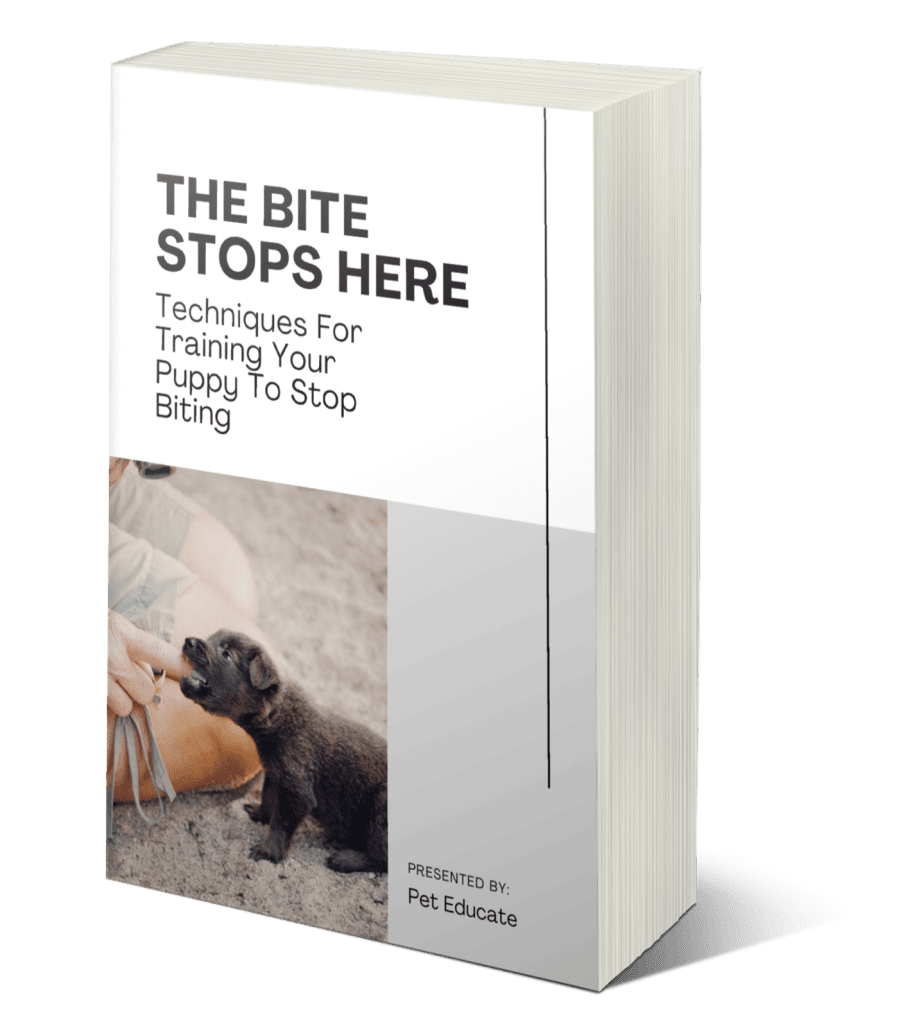
This image is property of peteducate.com.
Positive Reinforcement Training
Using Treats and Rewards
Positive reinforcement is an effective training method when it comes to managing your Goldendoodle's biting behavior. Whenever your puppy exhibits gentle play or refrains from biting, immediately reward them with treats, praise, and affection. This positive association will encourage your puppy to repeat the desired behavior.
Implementing Clicker Training
Clicker training can be a valuable tool in teaching your Goldendoodle what is considered desirable behavior and what is not. Use a clicker to mark the moment your puppy exhibits good behavior, such as gentle mouthing or refraining from biting. Follow the click with a treat or reward to strengthen the connection between the click and the desired behavior.
Reinforcing Desirable Behavior
Consistently reinforce desirable behavior by rewarding your Goldendoodle whenever they exhibit gentle play or refrain from biting. Be patient and consistent in your training efforts. Over time, your puppy will associate gentle play with positive rewards, making them more likely to engage in appropriate behavior.
Redirecting and Diverting Biting Tendencies
Effective Chew Toys
Providing your Goldendoodle with a variety of appropriate chew toys is essential in redirecting their biting tendencies. Opt for toys that are durable, safe, and specifically designed for teething puppies. By offering an enticing alternative to your hands or furniture, you can redirect their attention and save your belongings from potential damage.
Interactive Games and Puzzles
Keeping your Goldendoodle mentally stimulated can help divert their biting tendencies. Interactive games and puzzles, such as treat-dispensing toys or puzzle balls, engage their mind and challenge their problem-solving skills. These activities provide a positive outlet for their energy and biting instincts while promoting mental enrichment.
Occupying Their Attention
When you notice your Goldendoodle starting to bite, redirect their attention to a more appropriate activity. This can be a game of fetch, a training session, or a simple command like "sit" or "down." By diverting their attention and engaging them in a different activity, you can effectively redirect their biting tendencies.
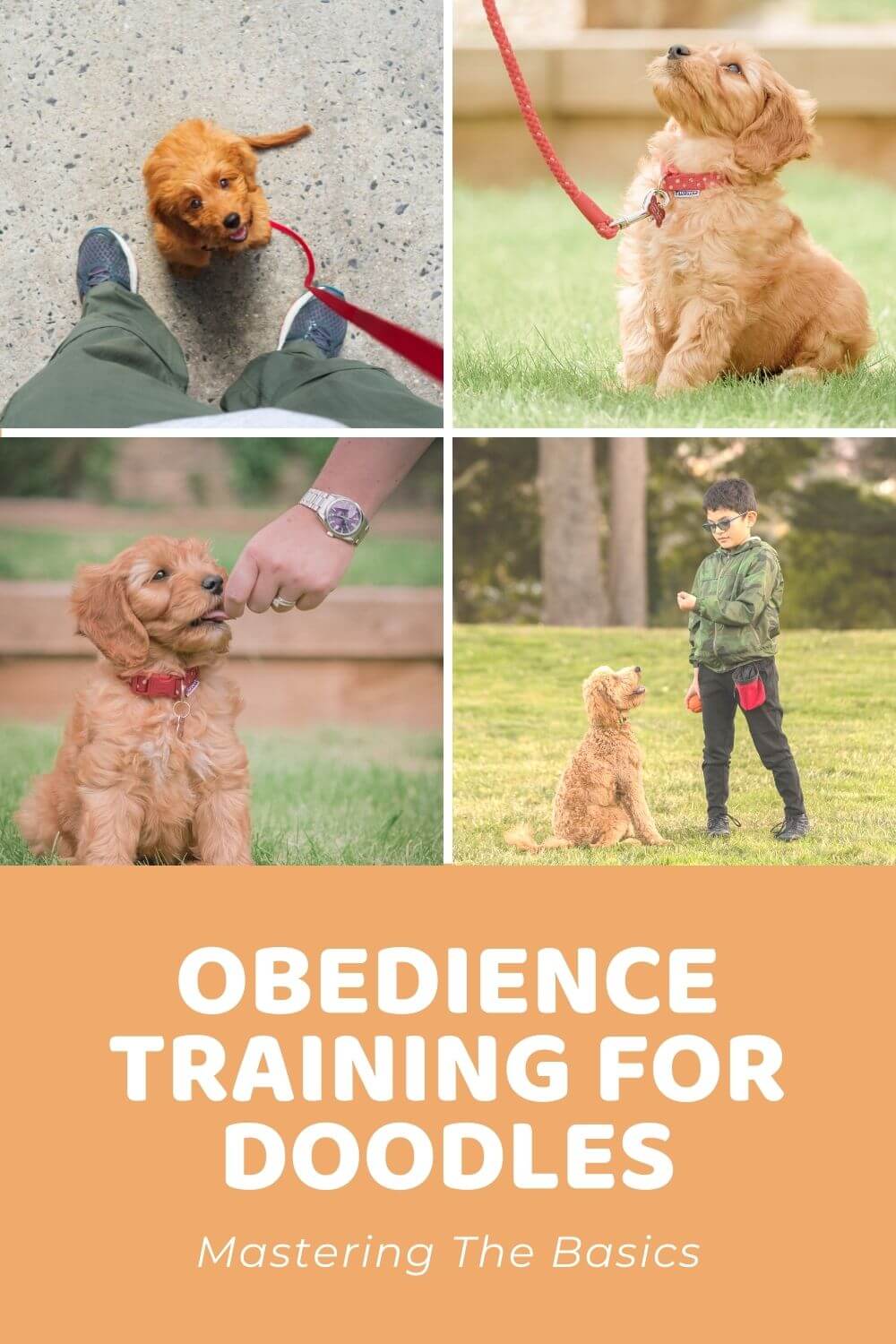
This image is property of doodledoods.com.
Discouraging Rough Play
Establishing Gentle Play Boundaries
Teach your Goldendoodle the difference between gentle play and rough play by setting clear boundaries. If your puppy starts playing too rough, immediately withdraw your attention and stop the play session. This will teach them that rough play leads to the end of fun. Encourage gentle play by rewarding calm and controlled behavior.
Maintaining Calm Energy
Dogs are highly intuitive creatures and can pick up on human emotions. Maintaining a calm and relaxed energy during playtime can help prevent overexcitement and reduce the likelihood of biting. Avoid excessive roughhousing or loud noises, as it can encourage your Goldendoodle to match your energy level, potentially leading to unwanted biting behavior.
Avoiding Aggressive Games
Avoid playing aggressive games, such as tug-of-war or wrestling, with your Goldendoodle. These types of games can easily escalate into rough play and increase the risk of biting. Instead, focus on interactive games that promote cooperation and gentle play, such as hide-and-seek or puzzle-solving activities.
Consistency and Patience
Being Patient with Progress
Training your Goldendoodle not to bite requires patience and understanding. Puppies may take time to grasp the concept of bite inhibition and adjust their behavior accordingly. Be patient with their progress and avoid resorting to punishment or frustration. Consistent reinforcement and positive encouragement will yield better results in the long run.
Consistently Reinforcing Training
Consistency is vital in reinforcing your Goldendoodle's training. Continuously reinforce the desired behavior by rewarding gentle play and redirecting biting tendencies. Consistency in your approach will help your Goldendoodle understand what is expected of them and reduce confusion or inconsistency in their training.
Avoiding Inconsistencies
Inconsistencies in your training approach can lead to confusion and frustration for your Goldendoodle. Ensure that everyone in your household is on the same page when it comes to training and enforcing rules. Avoid mixed messages or contradictory actions, as this can hinder your Goldendoodle's progress in learning not to bite.
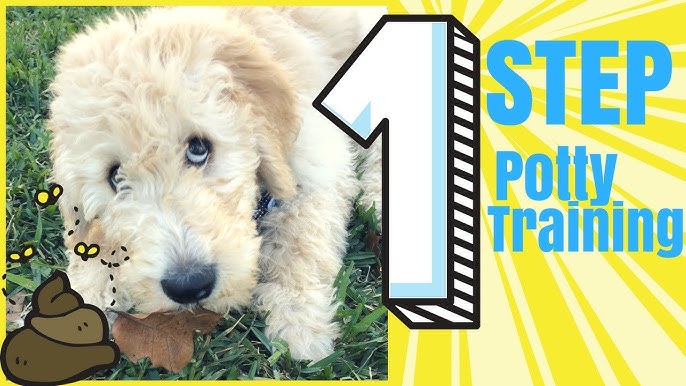
This image is property of i.ytimg.com.
Avoiding Punishment or Harsh Methods
Understanding the Ineffectiveness of Punishment
Punishment or harsh methods can have detrimental effects on your Goldendoodle's behavior and overall well-being. Physical punishment or scolding can increase fear or anxiety, potentially worsening biting tendencies or leading to other negative behaviors. Instead, focus on positive and reward-based training methods to foster a healthy and trusting relationship with your Goldendoodle.
Nurturing Trust and Bond
Building a strong bond and nurturing trust with your Goldendoodle is crucial in managing their biting tendencies. Spend quality time with your puppy, engaging in positive interactions and activities that foster a sense of companionship. By nurturing trust, you create an environment where your Goldendoodle feels safe, reducing the likelihood of biting as a defense mechanism.
Using Positive Approach
Positive reinforcement training is the most effective approach when it comes to teaching your Goldendoodle not to bite. By rewarding desired behavior and redirecting their biting tendencies, you create a positive association and understanding that gentle play is rewarding. Positive reinforcement builds confidence and trust in your Goldendoodle, helping them develop into a well-behaved and happy companion.
Conclusion
Celebrating Progress
Training your Goldendoodle not to bite requires time and effort, but with consistency and patience, you will see progress. Celebrate every milestone, no matter how small, to acknowledge the hard work you and your Goldendoodle have put into the training process. Celebrating progress helps maintain motivation and reinforces positive behavior.
Maintaining a Healthy and Positive Relationship
As you train your Goldendoodle not to bite, remember to prioritize maintaining a healthy and positive relationship with them. Focus on fostering trust, providing a safe environment, and showing them love and affection. A strong bond between you and your Goldendoodle is the foundation for a well-rounded and well-behaved companion.
Enjoying a Well-Behaved Goldendoodle
By following the step-by-step guide to train your Goldendoodle not to bite, you can enjoy the company of a well-behaved and gentle-natured dog. The effort you put into their training will pay off in the form of a loving and obedient companion. Embrace the journey of training your Goldendoodle and cherish the moments of growth and progress along the way.
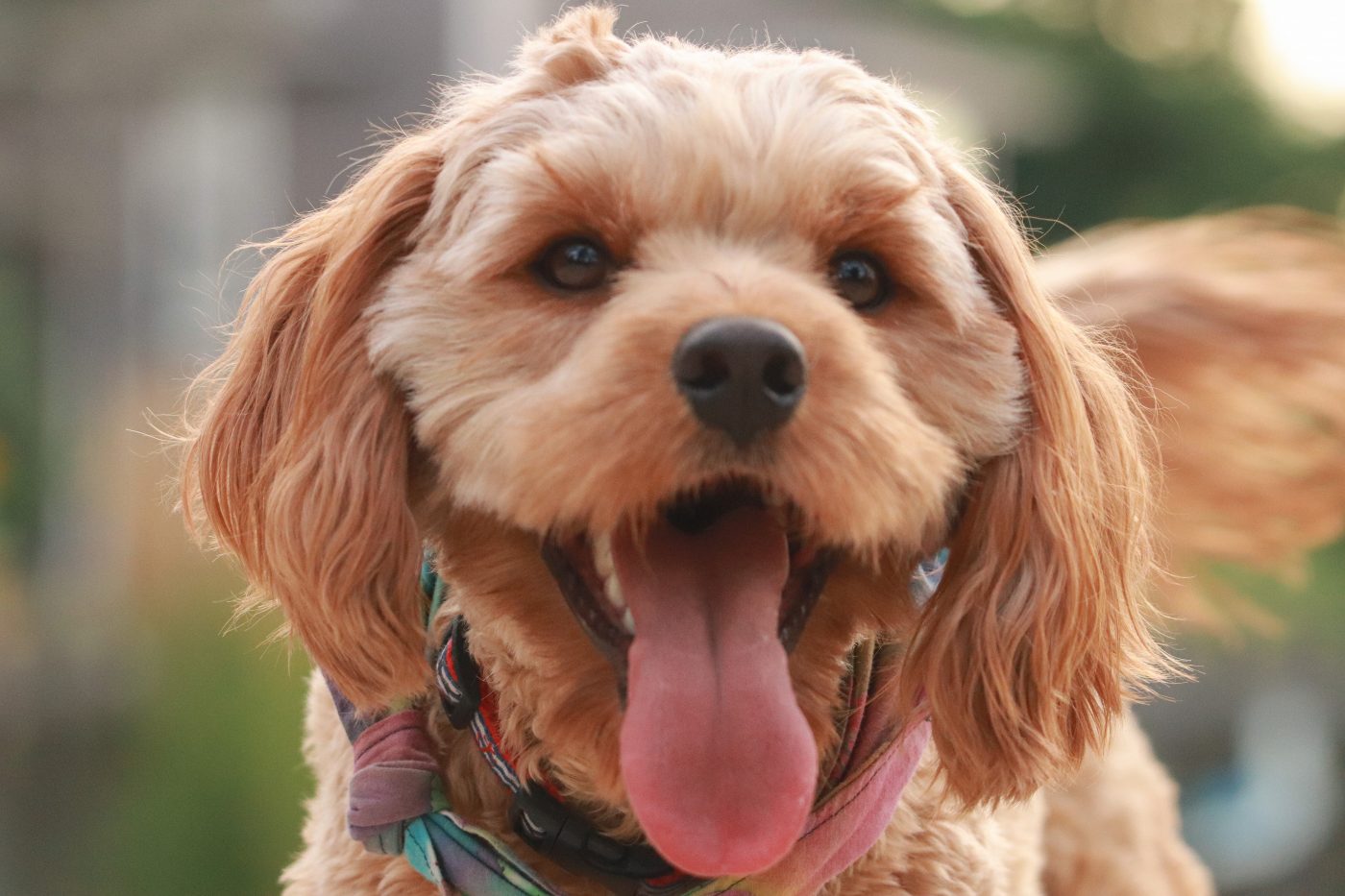
This image is property of iheartdogs.com.

